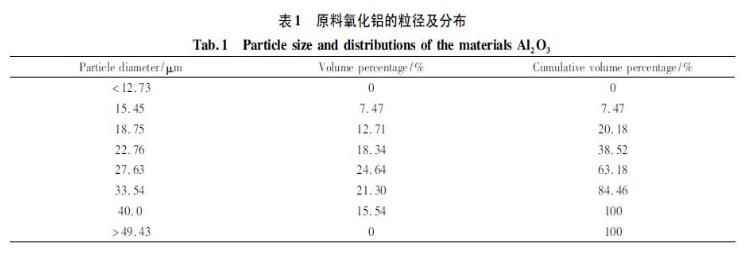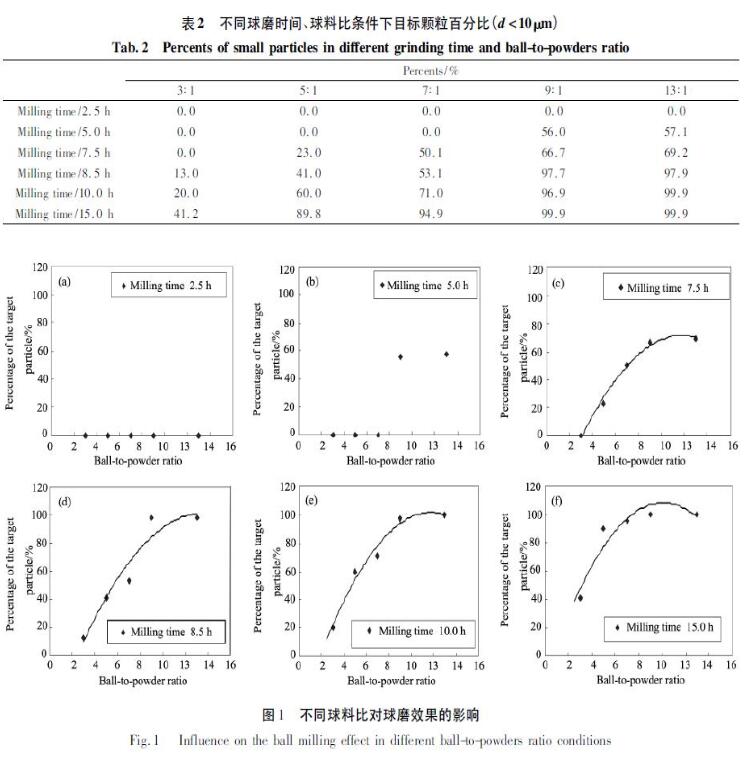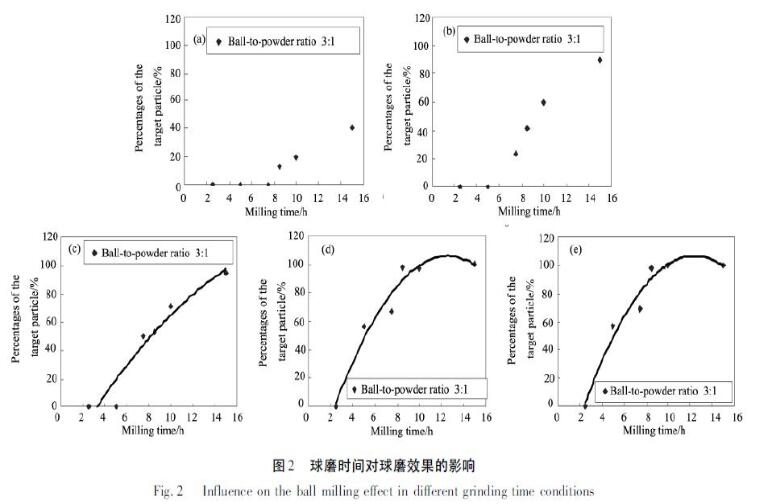In the quest for obtaining finely dispersed raw material powders suitable for sintering ceramic membrane supports, this experiment used 500M particle-sized aluminum oxide powder as a starting material. The objective was to explore the optimal wet milling conditions. Wet milling was carried out under different milling times and ball-to-material ratios to compare the milling effects. The particle size and distribution of the powder after milling were measured, considering cost factors, to draw conclusions. The results of the experiment indicate that a ball-to-material ratio of 9:1 to 11:1 and a milling time of 9 to 10 hours provide the optimal milling conditions. Subsequent experiments confirmed that under these optimal conditions, the powder obtained had a more uniform particle size distribution and could be directly used for sintering high-temperature, high-strength ceramic membrane supports.
With the rapid development of membrane separation technology, ceramic membranes have found extensive applications in industries such as food, chemical engineering, pharmaceuticals, and biotechnology. However, there is a lack of research on the wet preparation technology of aluminum oxide powder, which is a common raw material for ceramic membranes. Parameters such as particle size, particle size distribution, and sphericity of the powder can directly affect the structure and performance of the final sintered ceramic membrane support. Reducing the production cost of ceramic membrane supports has also been a key focus of ceramic membrane research in recent years. Therefore, preparing powders that meet the shape and performance requirements for ceramic membrane support sintering, optimizing their preparation conditions, and reducing costs are of utmost importance.
In today's ceramic membrane production, α-Al2O3 is one of the important raw materials for preparing ceramic membrane supports. α-Al2O3 is stable in various aluminum oxide crystals, has a large lattice energy, high melting point, and high hardness. However, grinding commercial α-Al2O3 powder into suitable particle sizes is a challenging process. Typically, the milling time is generally over 12 hours, and this process consumes a significant amount of energy, accounting for approximately 50% of the production cost of ceramic membrane supports. Therefore, it is necessary to optimize the milling conditions, improve production efficiency, reduce energy consumption, lower the comprehensive production cost of ceramic membranes, and further enhance the industrial feasibility of ceramic membranes. While dry milling results in better particle sphericity compared to wet milling, wet milling is more efficient. Hence, this experiment employed wet milling technology using polyacrylic acid (PAA) as the dispersing medium to optimize parameters that significantly affect milling efficiency, such as milling time and ball-to-material ratio.
Experiment
2.1 Experimental Materials
Aluminum oxide powder was purchased from a company in Zibo City, Shandong Province, with a particle size of 500M. The particle size distribution is shown in Table 1.

2.2 Key Experimental Equipment
Vertical ball mill, model LM-70, with a total power of 5.5 kW, manufactured by Wuxi Xinbiao Powder Machinery Manufacturing Co., Ltd.
Laser particle size analyzer, model Winner2000S, with a testing accuracy of 0.1-300 μm, produced by Jinan Weinan Particle Instrument Co., Ltd.
Air compressor, double diaphragm pump, oven, electronic balance, and other equipment.
2.3 Experimental Procedure
Using wet milling technology, the 500M aluminum oxide raw material powder was milled under different ball-to-material ratios (3:1, 5:1, 7:1, 9:1, and 13:1) to obtain target particles (particles smaller than 10 μm) with a weight percentage (wt%) greater than 90%. To minimize contamination during milling, 6mm composite zirconia beads were used as the milling medium. The total milling time was 15 hours. At milling times of 2.5 hours, 5 hours, 7.5 hours, 8.5 hours, 10 hours, and 15 hours, 500mL of the milled aluminum oxide suspension was taken for drying in an oven. The particle size and distribution were determined using a laser particle size analyzer.
Results and Analysis
3.1 Experimental Results
Experimental results under different milling times and ball-to-material ratios are shown in Table 2.

3.2 Comparative Analysis
(1) Impact of Ball-to-Material Ratio on Milling Effects
Graph 1 illustrates the completion of target particles as a percentage with the ball-to-material ratio on the x-axis, comparing the effects after the same milling time. Graph 1a shows that, regardless of the ball-to-material ratio, after 2.5 hours of milling, the raw material particles remained in the 10-40 μm range, making it difficult to achieve the target particle size. Graph 1b shows that after 5 hours of milling, those with higher ball-to-material ratios could achieve more than 50% of the target particles, while those with lower ratios did not achieve the target particles. This suggests that in the initial stages of milling, especially within the first 5 hours, the ball-to-material ratio is the primary influencing factor, with higher ratios resulting in higher milling efficiency. Graph 1c shows that after 7.5 hours of milling, the completion percentage of target particles initially increases continuously with higher ball-to-material ratios and stabilizes when the ratio is greater than 10:1. This indicates that after reaching a certain value, the ball-to-material ratio is no longer the main factor, and the breakage and increased quantity of raw material particles have become the main factors for improving collision efficiency. Graphs 1d, e, and f indicate that those with higher ball-to-material ratios achieved the milling process (completion percentage of target particles exceeding 90%) before 15 hours, and a "reverse milling" phenomenon may occur in the later stages, i.e., agglomeration. Therefore, when the ball-to-material ratio is high, the percentage of target particles may slow down.

(2) Variation in Milling Effects with Milling Time
With the target particle percentage on the y-axis and milling time on the x-axis, Graph 2 compares the variation in milling effects under the same ball-to-material ratio conditions. In general, as the ball-to-material ratio increases, the probability of contact between the material and milling medium increases, leading to a simultaneous increase in milling efficiency. However, the resulting trend in milling effects has a clear variation. Graphs 2a and 2b both show that with a ball-to-material ratio of 15:1, the percentage of target particles reaches 90% after 15 hours of milling and exhibits an accelerating upward trend. This indicates that under these conditions, milling for 15 hours is still in the initial stage of material breakage (between 10-40 μm) and the partial generation of target particles, and more time is needed to complete the milling target, resulting in high energy consumption. When the ball-to-material ratio reaches 7:1 or higher, the upward trend in the percentage of target particles is no longer accelerating and remains nearly linear, with the speed of increase slowing down when the ratio is 9:1. At 13:1, the milling target is achieved after approximately 8 hours, significantly reducing milling time and energy consumption. It's important to note that none of the measured target particle percentages reached 100%, indicating that even with micrometer-sized particles, agglomeration is still present.
Based on the milling target, which is a particle size of less than 10 μm with a percentage exceeding 90%, we can calculate the required milling time based on the trend lines of the three groups of milling data with ball-to-material ratios of 7:1, 9:1, and 13:1. The calculated milling times are 13.7 hours, 8.7 hours, and 8.5 hours, respectively. This suggests that when the ball-to-material ratio exceeds 9:1, the required milling time does not change significantly, and the ball-to-material ratio is no longer a controlling factor. Based on engineering conventions, the optimal ball-to-material ratio is between 9:1 and 11:1. Combining the results from Graph 1 and Graph 2, the ideal milling time is between 9 and 10 hours.
3.3 Sintering Experiment and Analysis
The sphericity of the powder directly affects the sintering of ceramic membrane supports. Well-rounded Al2O3 powder can form a support structure in a spherical stacking form, resulting in a slightly lower porosity and smaller contact surface area between spherical particles, which enhances the overall strength of the support. Using the powder obtained from wet milling with a ball-to-material ratio of 9:1 and a milling time of 10 hours, ceramic membrane supports were prepared according to a specific sintering regimen. The resulting ceramic membrane supports had a porosity ranging from 31.7% to 35.6%, a large pore size of 9-12 μm, and a flexural strength of 3.9-4.5 kN. These parameters meet the industrial parameters for ceramic membrane support production, indicating that the powder obtained under optimal milling conditions meets the requirements for support preparation, consistent with particle size distribution experiments as reported by Ding Guanbao, et al.

Conclusion
Wet milling results in well-rounded powder, meeting the requirements for direct use in sintering ceramic membrane support production.
The experimental results indicate that the optimal wet milling conditions are a milling time of 9-10 hours and a ball-to-material ratio of 9:1 to 11:1. Under these conditions, the percentage of powder particles smaller than 10 μm reaches over 90%, and the milling time is approximately 30% shorter compared to previous reports, resulting in significant energy savings and reduced powder preparation costs.

Submit your demand,
we will contact you ASAP.

Sanxin New Materials Co., Ltd. focus on producing and selling ceramic beads and parts such as grinding media, blasting beads, bearing ball, structure part, ceramic wear-resistant liners, Nanoparticles Nano Powder

